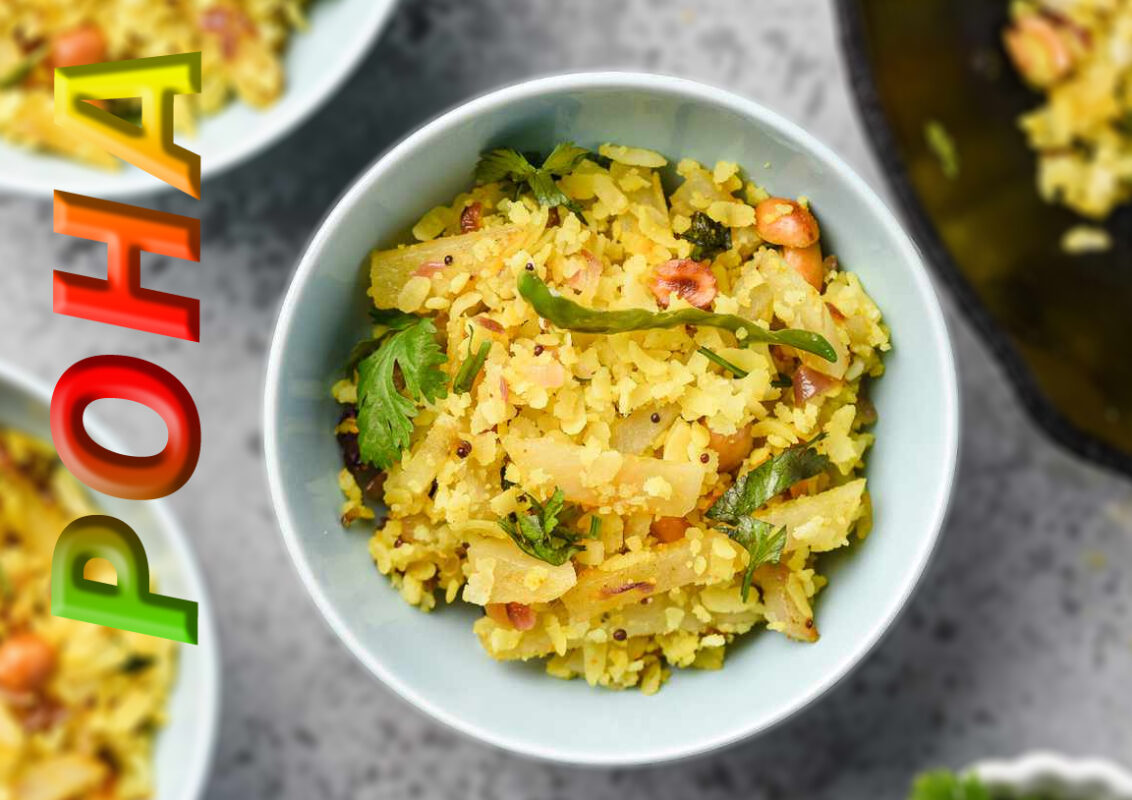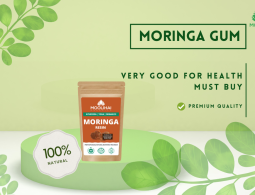9 Benefits of Poha: Calories, Protein & Nutrition Chart of Poha
Poha is a popular Indian breakfast dish, loved for its delicious taste and versatility. But did you know that poha is not just about satiating your taste buds but is also a powerhouse of nutrition? Let’s dig into the benefits of poha, its calories, protein, and overall nutritional value.

Poha Calories & Nutrition:
The nutritional content of poha can vary based on how it’s prepared. The table below gives an overview of the caloric content of different variations of poha.
| Type of Poha | Approximate Calories |
| 100 gram uncooked poha | 350 calories |
| 100 gram poha with onion and tomato | 250 calories |
| 100 gram poha with oil | 300 calories |
| Poha with peanuts | 320 calories |
| Poha with curd | 200 calories |
| Poha with vegetables | 220 calories |
| Poha 1 cup / bowl (139 grams) | 300 calories |
| Poha 1 plate | 400-500 calories |
Poha Nutrition Table (100 gm cooked Poha)
| Nutrient | Amount |
| Calories | 250 kcal |
| Protein | 7 g |
| Fat | 1.5 g |
| Carbohydrates | 76 g |
| Fiber | 2.5 g |
| Sodium | 8 mg |
| Potassium | 105 mg |
| Iron | 1.2 mg |
This is just an estimate and the amount may vary depending on the ingredients.
Nutrition Table For A Full Plate of Poha:
| Nutrient | Amount |
| Calories | 500 kcal |
| Protein | 14 g |
| Fat | 3 g |
| Carbohydrates | 152 g |
| Fiber | 5 g |
| Sodium | 16 mg |
| Potassium | 210 mg |
| Iron | 2.4 mg |
Remember, these numbers can vary based on the specific ingredients and recipe used. This table should be used as a rough guide, and the nutritional content will change if you add vegetables, nuts, or other ingredients.
Nutrition Table for Cub of Poha with Milk
Assuming that a cup of poha equates to about 139 grams and a cup of milk (approximately 240 ml) is used, here’s the estimated nutritional profile:
| Nutrient | Amount in Poha | Amount in Milk | Total |
| Calories | 300 kcal | 100 kcal | 400 kcal |
| Protein | 9.7 g | 8 g | 17.7 g |
| Fat | 2.1 g | 2.4 g | 4.5 g |
| Carbohydrates | 105.6 g | 12 g | 117.6 g |
| Fiber | 3.5 g | 0 g | 3.5 g |
| Sodium | 11.1 mg | 105 mg | 116.1 mg |
| Potassium | 146.0 mg | 322 mg | 468.0 mg |
| Iron | 1.7 mg | 0.03 mg | 1.73 mg |
| Calcium | N/A | 300 mg | 300 mg |
Please note that these values can vary based on the specific recipe and ingredients used for poha and the type of milk (I assumed skim milk for this table). The presence of additional ingredients like vegetables, spices, or nuts in the poha can alter these values. This table should be used as a rough guide.

Red Poha vs White Poha: A Caloric Comparison
A debate often arises when it comes to choosing between red and white poha. Here’s a quick comparison:
Red poha, made from red rice, contains approximately 365 calories per 100 grams.
White poha, made from white rice, has around 350 calories per 100 grams.
While the caloric difference is minimal, red poha is generally considered healthier due to the presence of extra fiber and antioxidants from the husk of the red rice.
The 9 Benefits of Poha
Energy Boost:
High in carbohydrates, poha provides a quick and sustainable energy boost.
Digestive Health:
Poha is easy to digest and is rich in fiber, promoting good gut health.
Heart Health:
Being low in sodium and high in potassium, poha helps maintain a healthy heart.
Diabetic Friendly:
The complex carbs in poha ensure a slow and steady release of sugar into the bloodstream, making it suitable for diabetics.
Weight Management:
Poha is filling and provides energy without adding too many calories, making it a good option for weight management.
Rich in Iron:
Poha is a good source of iron, especially if the poha is flattened in an iron pounder.
Gluten-Free:
For those with gluten intolerance or celiac disease, poha is a safe and tasty option.
Good Source of Healthy Fats:
If cooked with peanuts or other nuts, poha provides essential healthy fats.
Versatile:
Lastly, poha can be cooked with a variety of ingredients, making it versatile and adaptable to different dietary needs.
Recommended Daily Consumption
Determining an exact recommended daily consumption for a specific food like poha based on age can be challenging as it greatly depends on individual dietary needs, overall lifestyle, physical activity, health status, and the balance of the rest of the diet. However, I can provide a generalized recommendation assuming that a serving is a standard cup or bowl of poha (139 grams).
Please remember that the below table is simply an estimate and the actual quantity can vary. Always consult a nutritionist or healthcare provider for personalized dietary advice.
| Age Group | Approximate Poha Servings Per Day |
| 1-3 years | 1/2 – 1 serving (cup) |
| 4-8 years | 1 – 1.5 servings (cups) |
| 9-13 years | 1 – 2 servings (cups) |
| 14-18 years | 1 – 2 servings (cups) |
| 19-64 years | 1 – 2 servings (cups) |
| 65+ years | 1 – 2 servings (cups) |
Remember, a balanced and varied diet is crucial. Therefore, while poha is a nutritious choice, it’s important to pair it with other healthy food groups such as fruits, vegetables, lean proteins, and whole grains.

Can You Use Poha For Weight Loss:
Poha can indeed be a part of a healthy weight loss diet due to its high nutritional value and relatively low calorie content. Here’s how you can incorporate poha into your weight loss regime:
Portion Control: While poha is a healthier option, portion control is vital. Stick to consuming one serving, i.e., one cup or bowl, at a time.
Load Up On Veggies: Add plenty of fresh vegetables to your poha. Vegetables like peas, bell peppers, carrots, and tomatoes not only make the dish more filling but also add fiber and essential vitamins and minerals, which contribute to overall health.
Choose Healthy Add-Ons: Opt for healthy ingredients like sprouted pulses, lentils, or nuts, which can enhance the protein content. Protein keeps you feeling full and satisfied longer, thus reducing the urge to snack.
Avoid Excess Oil and Sugar: Keep the oil content to a minimum while cooking poha. Also, try to avoid adding extra sugar, as this can increase the calorie content.
Don’t Skip Meals: Use poha as a breakfast or lunch option, not as a replacement for meals. Consistently eating balanced meals can help maintain your metabolism and prevent overeating later in the day.
Pair with Exercise: Pair your healthy eating habits with regular physical activity for the best weight loss results.
Remember, while poha is a good choice for weight loss, it’s essential to maintain a balanced diet with a variety of nutrients. It’s also a good idea to consult with a dietitian or a nutritionist to get a diet plan tailored to your personal needs and goals.
Poha For Diabetes Cure & Control:

Poha is a complex carbohydrate, which means it releases sugar slowly into the bloodstream, preventing sudden spikes in blood sugar levels. This makes it a good dietary choice for those with diabetes.
Poha is not a special dish which can bring your sugar level down overnight. It does not have any special diabetic-controlling properties.
Consume poha in a limited amount and with proper calorie calculation.
Gluten Sensitivity:
Poha is naturally gluten-free, making it a safe and nutritious choice for those with celiac disease or non-celiac gluten sensitivity.
Poha For Weight Gain:

Consuming poha with milk may contribute to weight gain if you are looking to add extra calories to your diet. However, it’s important to balance this with other nutrient-dense foods and exercise.
POHA for Cardiac health
Poha is a very light food and non-oily eatable, it is very safe for people with cardiac problems. It gets digested very easily avoiding dullness and high blood pressure and food poisoning (due to indigestion).

Iron mine for Anemic people
Poha is a favourably recommended source of iron by elderly people in ancient India. People used to advise their children who are so lean and not interested in taking a sip of milk and eating food to consume POHA to gain muscle and energy in very little time. It is very helpful for a person to get rid of anaemia in no time.
Versatile food ever
Poha can be made as a variety of food items which are not at all similar to each other in looks and smell. It blends with any other food and can be modified with any kind of food, even as a dessert it could be used. You can add any flavour and blend it the way you like.
In conclusion, poha is a versatile, nutritious, and delicious dish that can be enjoyed in a variety of ways. Whether you’re looking to maintain a healthy weight, manage diabetes, or simply want a gluten-free alternative, poha is an excellent choice. Remember, though, the key to a healthy diet is balance and moderation. Enjoy your poha as part of a varied and colorful diet, and reap the many benefits it has to offer.







Add comment